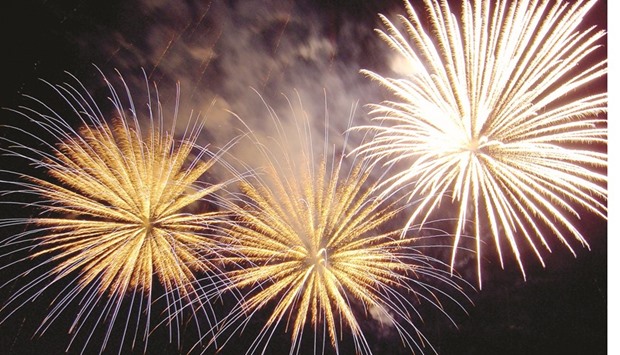Around half past 10, the annual four-night Eid Fireworks show, in a cascade of sparkling colours and glittering glow, fills up the sky by the Katara beach as if to crown a festive weekend. The celebratory sounds of firecrackers bursting and wailing into the night brought smiles and exhilaration, as it always does, in the eyes of the thousands that had gathered at the venue on each of the Eid nights.
Following the live stage shows weaved around the theme of A Child’s Dream — which was attended by more than 5,000 people on each of the Eid evenings — the wild furore of spectacular fireworks went on for a good 15 minutes, leaving people in awe and the wide-eyed children, all the more so.
Sharif Hashisho, Managing Director of Qvision, which organises the Eid fireworks show and the stage show during Eid al-Fitr, both of which draw in the crowd from far and wide, told Community, after the event on Friday night, that a lot of planning goes into the fireworks show.
“We begin planning this show more than two months in advance because we are importing explosives. We first get the permission from the Ministry of Interior, which approves the calibre and kind of the fireworks that we import. We also get another approval from the Ministry of Environment so as to ensure that we don’t pollute the air here in Qatar,” Hashisho explained.
Procuring the finest quality of fireworks is a task in itself. “A lot of the fireworks that we use come from Spain and China because these are special shell fireworks,” says Hashisho, “After each show, we have officials from the Explosives Department of the Ministry of Interior visiting the spot to check whether every piece of cracker is ignited. And if anything has been left out or misfired, they ignite it after the show and clear the area.”
Before the all-out aerial display, each of the shells is placed in a mortar tube by the pyrotechnicians and linked to a central control unit where the fireworks are synchronised and each of the shells’ explosion can then be individually controlled and timed to the music, points out a story in the website Marhaba in August 2013. “Fireworks consist of a multitude of shells made of heavy paper casing. Each shell is separated by cardboard into compartments, where the base is filled with black powder and propels the firework into the sky. A larger compartment contains a mixture of chemicals that produce light and colour when heated. These components are called ‘stars’.”
In Qatar, fireworks have been often used on occasions such as Eid al-Fitr and Eid al-Adha functions, and to even celebrate the Qatar National Day on the Corniche. For the Eid fireworks shows, which ended yesterday (Saturday), 1,800 shells were fired up on each of the nights.
“We have been handling these events for a long time. We have our pyrotechnical specialist to take care of the details. Everything is co-ordinated. From a digital wire assistant to an assistant who fills us in on the risk assessment on the explosives before they are ignited, we have our checks in place,” Hashisho says.
While some are ignited and synchronised to music, some are set off just for the aerial show. “Synchronising the fireworks to music, for instance, is a show we create ourselves because we are setting them off according to certain timing. It’s important that we sync them perfectly with music and that takes a lot of creative work from the many talents in our team,” Hashisho explains.
Moreover, a lot of these fireworks produce a lot of smoke, Hashisho points out. “In a 10-minute show, after about three minutes, you won’t see anything because everything around you is smoke. So we need to be very smart in what kind of explosive materials we use, what kind of shells we choose, how they will explode, and whether they will produce smoke or not.”

The Eid fireworks at Katara.
